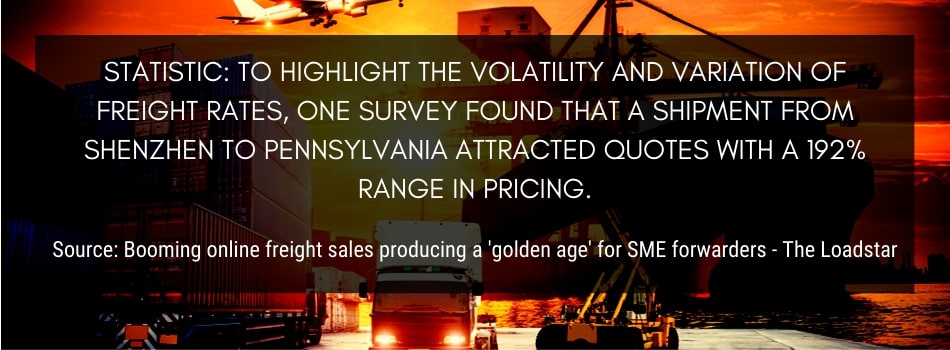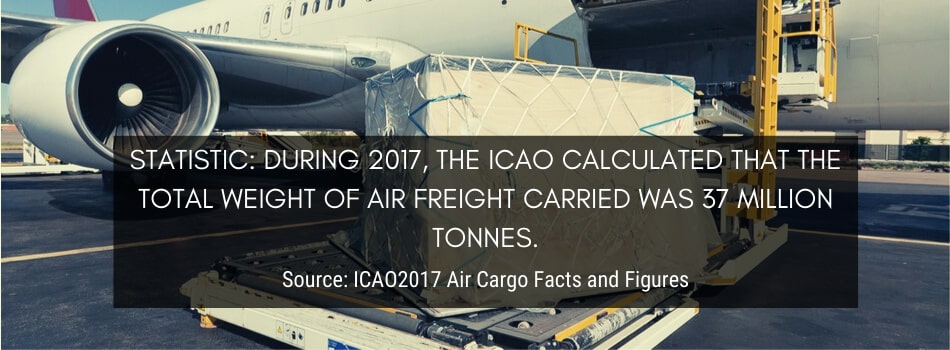ARTICLE SUMMARY
A common conundrum for companies is how to reduce their freight costs, which due to a recovery in demand following the Covid-19 pandemic have skyrocketed. Putting a lid on escalating freight costs has now become more important than ever.
There are a number of smart ways to achieve this goal. Here, in brief, are 12 of them:
- Define your freight profile
- Recalibrate your speed of deliveries
- Maximise your carrier capacity
- Consolidate non-urgent shipments
- Join forces with other shippers
- Site your distribution centres cleverly
- Look beyond local carriers
- Choose the right service
- Negotiate for off-peak times
- Reduce your dunnage
- Minimise LTL shipments
- Make an in-depth cost analysis
This article takes an in-depth look at each of these points and offers advice on how to meet the significant challenge of reducing freight costs.
One of the most common questions I get asked is, How can I reduce my freight costs?
In answering this question I start by highlighting the wrong way to go about it. The first thing people try to do is attack the rate itself—the dollars per ton, the dollars per pallet, whatever it is that you are paying.
Let’s say you are paying $30 per pallet for delivery and you try to get $29 or $28. That’s really not the way to go about it because you need to realise that freight transport is a very low margin activity and if you’re trying to reduce the price, you’re not going to get very far.
Instead, it’s often better to try and reduce the cost to the freight company of shipping your products, so that they can lower their price to you.
A Dozen Possibilities to Cut Freight Costs
Now let us look at some of the right ways to reduce your freight costs. I also go over some of this ground in a Supply Chain Secrets YouTube video, which I invite you to watch.
1) Define Your Freight Profile
Are you paying a ton rate or a pallet rate appropriate to your freight profile? For example, if you are paying an hourly rate for deliveries, is that necessarily going to create the right behaviour in the transport company to get your deliveries done efficiently?
So think about the rate structure, whether it is per ton, per pallet, per carton, and try to ascertain if it it’s the one most suitable for your freight profile. If not, it could be worth renegotiating the structure.
2) Recalibrate your Speed of Deliveries
Are you using excessive amounts of air freight or express freight when general road freight could do? Go back to your invoices and see which different priorities you are paying for, which speeds of freight if you like, and make sure that is appropriate. Very often the people booking your freight will book a higher priority than is really needed.
If you are using air freight, ask yourself whether it is necessary to cover the entire shipping distance by air. You might find it more economical to use air for a portion of the route and ocean transport for the rest, or vice versa.
3) Maximise Your Carrier Capacity
How are you presenting your freight to the freight company? Is it easy for them to handle and load into their vehicles? If, for example, you have some really fragile products that have been palletised, and it is so delicate that you can’t put other pallets on top of it, you’re going to be paying for two pallets in that vehicle. You are paying for the volume of the vehicle that you are occupying.
Likewise, if your pallets are packed in such a way that they are uneven, making it impossible to put another pallet on the top, again you’re going to be paying for two pallets.
So think about how you are presenting your freight to the transport company. Make it as easy as possible for them to maximise the capacity of their vehicles.
4) Consolidate Non-urgent shipments
It might not work for everyone or in every situation, but if you can manage it without affecting customer service, try to hold on to non-urgent shipments and consolidate them with other loads to optimise truck or container space.
5) Join forces with Other Shippers
If possible, seek to join forces with other shippers near your distribution centres to consolidate your freight with theirs. It would be even better if they are local companies who supply their products to the same customers as you do.
6) Site your Distribution Centres Smartly
Ask yourself why you sited your distribution centres where you did. Are they the best locations or did you choose them because they offered taxation benefits and/or lower leasing costs? This could be a false economy. It’s typically better to assess locations by their proximity to customers—the savings in transportation kilometres could be significant.
7) Look beyond Local Carriers
There are always plenty of carriers from other districts that deliver into your patch. Instead of always choosing a local carrier, you may save some freight cost by collaborating with one of them.
8) Choose the Right Service
When people are paying too much for transport, it’s generally because they are buying the wrong service. Are you sending freight out overnight when two-day service would do? Are you sending it out to be delivered in a couple of hours by courier when next-day would suffice?
9) Negotiate for off-peak times
Some carriers offer lower rates during off-peak times, so if possible schedule your freight deliveries for late afternoon or early in the week.
10) Reduce your Dunnage
Every bit of wood, matting, and other material you use to keep your cargo in position takes up space and adds weight—and increases your costs.
11) Minimise LTL shipments
Less-than-truckload shipments add significantly to your freight costs. Some ways to reduce LTL shipments include:
- Use logistics software to determine ways to increase your full-truckload shipping frequency
- Look for carriers that offer load consolidation
- Make your freight attractive to freelance LTL carriers who generally offer better rates.
12) Perform an In-Depth Cost Analysis
When dealing with carriers, the best approach is to define what you want them to give you, says Logistics Bureau Commercial Director Trent Morris in a video interview.
For example, if you go to carriers and say that I need to move goods from A to B, they will come back to you with their standard rate and tariff format.
Rather go to them and say that you want an extensive quote. Tell them that you need a kilogram rate, or a tonnage rate, or a pallet rate, and then you tell them that you also want them to quote from one to five pallets, from six to 10 pallets, and so on. Then you go to every single carrier with that same methodology.
You must require all of your carriers to come back to you in the exact same format. It will then be easy to analyse and understand who is going to offer the best service and the best prices.
Has This Been Helpful?
If you have any input to give on this essential logistics topic, please write it below. Perhaps you have other freight cost-cutting ideas you could share? All ideas are welcome. Lastly, I highly recommend that you subscribe to the Supply Chain Secrets YouTube channel, where we post a new video every week offering tips and insights into all aspects of supply chain and logistics management.
Editor’s Note: This post was originally published on December 01, 2020, under the title “Supply Chain Education and Qualifications” on Logistics Bureau’s website.







